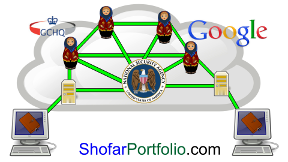|
||||||||||||||||||||||||||||||||||||||||||||||||||||||||||||||||||||||||||||||||||||||||||||||||||||||||||||||||||||||
|
|||
As ShofarDomain brings rootless Domains to the Internet landscape there is a transition time between the current rooted model to the rootless model. ISPs are key in the current model for the bulk of users as they provide DNS resolution. Ideally ISPs will begin to use DNS resolvers that are compatible with rootless domains and broaden their customer’s reach. The end user has the option of using ShofarDomain provided DNS resolvers. However with rootless technology, end user DNS resolution becomes the most rational option and can even become an integral part of the operating system. Why do we need resolvers? First we must understand that the DNS resolver converts the domain name, such as “ShofarDomain.com” to an IP address. While domain names are easy for us humans, the computers need the IP address. All Internet communications is from IP address to IP address. When the DNS system was formalized in 1983, computers did not have anywhere near the memory capacity of today and a distributed model was developed. This model is an iterative process where one computer asks another computer for the next part of the answer until the question is resolved. This process can involve a half dozen computers or more before the answer is found. Especially in the dial-up days the time involved in doing this process from the end user’s computer could be very slow. ISPs would do this work and also cache the results. The ISP could then use what it knows from one user’s request to resolve answers for all users. Rootless model speeds the process In the rootless domain model, the Top Level Domain is the sole source for all subdomains. A resolution request to a rootless TLD requires only a single request to a single server for an immediate response. All that is necessary to know is the location of the TLD and therefore an end user’s computer can easily make that request directly. Rootless TLDs each have a list of all other rootless TLD IP addresses. Therefore asking anyone for the address of the desired one will give you a valid response. The end user needs to know only one TLD IP to start and from there it can resolve any domain in typically one request and occasionally two when the TLD is first queried. ISP’s viewpoint An ISP can benefit by offering rootless DNS resolution to expand the reach of their customers to the ICANN root, the alternative roots, and rootless TLDs. Over time the ISP’s DNS load will be reduced as benefits to end users increase for them to do it themselves. End user’s viewpoint When the end user’s computer does the DNS resolution many new options are available. A notable one is the ability to make a secure DNS request. Since standard DNS traffic is easy to recognize, ISPs are typically required by law to record all your DNS traffic. Using the secure request the ISP never sees it happen. As monitoring and long-term storing of your DNS traffic is becoming the norm, removing it from the eyes of the ISP, corporations and governments is of real value. |
|||
|
|
||||||


